 Norbet Trupp VK5MQ, is currently operating from Macquarie Island as VKØAI. He uses an Icom IC-7300 with vertical and has been already reported active on 20, 30, 40 & 80 mts bands in FT8 Mode.
Norbet Trupp VK5MQ, is currently operating from Macquarie Island as VKØAI. He uses an Icom IC-7300 with vertical and has been already reported active on 20, 30, 40 & 80 mts bands in FT8 Mode.
QRZ.com says that Norbert who will stay at Macquarie Island Antarctic Research Base until March 2019, has Internet access, and is an avid user of both FT8 & eQSL.cc.
QSL via VK5MQ
In 1911, Australia’s Sir Douglas Mawson established the island’s first scientific station to conducti geomagnetic observations and mapping the island. Studies were made of the island’s botany, zoology, meteorology and geology.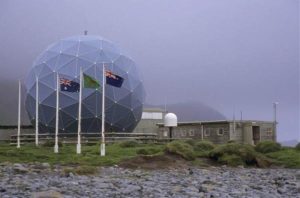
The Macquarie Island expedition also established the first radio link between Australia and Antarctica by setting up a radio relay station on Wireless Hill that could communicate with both Mawson’s main expedition group at Commonwealth Bay and Australia.
In addition, on Macquarie Island (WAP AUS-Ø8), are still present the Wireless Hill Hut, the Operating Hut & Engine Hut and few other Huts, all of the are WAP AUS-NEW.
The Wireless Relay Station Wireless Hill, 54° 29’ 41”South, 158° 56’ 29” East.
The last remaining pieces of the Macquarie Island masts were recovered nearly 100 years later in April 2011, by the Mawson’s Huts Foundation in partnership with the Tasmanian Parks and Wildlife Service, which has responsibility for the island on behalf of the Tasmanian Government. The fragments were returned to Hobart for conservation by the Foundation at the Tasmanian Museum and Art Gallery, where they will be displayed.
The locations are listed on Section 2 of WAP-WADA Directory among the other Macquarie Huts which are still un-numbered (WAP AUS-NEW) … just wondering if in the future some of the Hams at tha Base can try to activate them!
Read more at: http://maritimeradio.org/other-stations/macquarie-island/
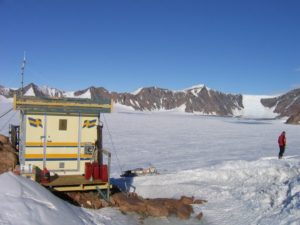 Svea is located in the Scharffenbergbotnen valley in the Heimefrontfjella mountain range, about 400 km from the coast. It was built during the 1987/88 Antarctic expedition and was the first Swedish research station in Antarctica since the Snow Hill station in 1901 and Maudheim in 1949.
Svea is located in the Scharffenbergbotnen valley in the Heimefrontfjella mountain range, about 400 km from the coast. It was built during the 1987/88 Antarctic expedition and was the first Swedish research station in Antarctica since the Snow Hill station in 1901 and Maudheim in 1949. and is an excellent Base for small, transient research teams performing fieldwork in the area. The station, comprising two joined fibreglass modules, is about 12 m2 and has four beds and one pantry.
and is an excellent Base for small, transient research teams performing fieldwork in the area. The station, comprising two joined fibreglass modules, is about 12 m2 and has four beds and one pantry.
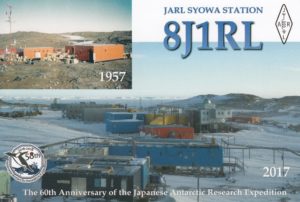 The story of Japan’s involvement in the Antarctic goes back to 1955, when it announced at a special committee on the International Geophysical Year in Brussels that it planned to begin research in the region.
The story of Japan’s involvement in the Antarctic goes back to 1955, when it announced at a special committee on the International Geophysical Year in Brussels that it planned to begin research in the region.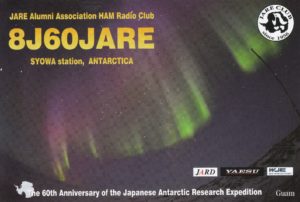
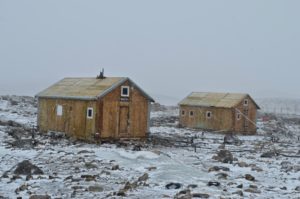 Nanda Devi Hut is a summer shelter in the area of the Indian Maitri Base (WAP IND-Ø3).
Nanda Devi Hut is a summer shelter in the area of the Indian Maitri Base (WAP IND-Ø3).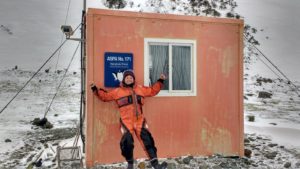 Barton Refuge is a Hut of 3 by 3 mts with gas stove, food, water, dry clothing and dry boots. Located little East of Narebsky point at 62° 14’ 18” South, 58° 45’ 20” West, this Korean outfits is used as emergency shelter and for scientific purpose. Korea’s King Sejong Station (WAP KOR-Ø1) lies 2 km to the North-East.
Barton Refuge is a Hut of 3 by 3 mts with gas stove, food, water, dry clothing and dry boots. Located little East of Narebsky point at 62° 14’ 18” South, 58° 45’ 20” West, this Korean outfits is used as emergency shelter and for scientific purpose. Korea’s King Sejong Station (WAP KOR-Ø1) lies 2 km to the North-East.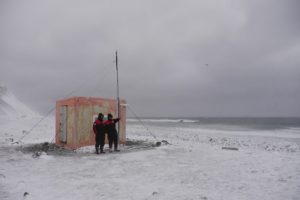 level.
level. Students of the “Malignani Institute” reconstruct the basement perimeter of the Italian scientific outpost built in Antarctica in 1976 by the Cepparo’s Expedition. It’s called MAVI (Memoriale dell’Antartide “Valle Italia”, Cepparo-Bove) and it’s a Memorial to not forget . The Ministry of Cultural Heritage (MiBACT) is one of the sponsors of this “National Antarctic Memorial, Renato Cepparo”
Students of the “Malignani Institute” reconstruct the basement perimeter of the Italian scientific outpost built in Antarctica in 1976 by the Cepparo’s Expedition. It’s called MAVI (Memoriale dell’Antartide “Valle Italia”, Cepparo-Bove) and it’s a Memorial to not forget . The Ministry of Cultural Heritage (MiBACT) is one of the sponsors of this “National Antarctic Memorial, Renato Cepparo”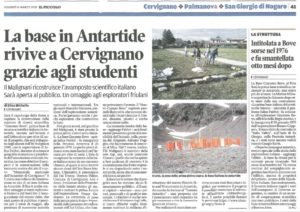 President of Adri-Antartica, Prof. Julius Fabbri, Ph.D. with the Cultural Association “ Adri-Antartica” in collaboration with the Municipality of Cervignano del Friuli (UD) and the School “Malignani 2000” member of the UNESCO network are pleased to announce the inauguration ceremony of the Antarctica “Valle Italia” (MANI), Cepparo-Bove, on Friday 25 May 2018 at the headquarters of the “A.Malignani” Technical Institute in Ramazzotti street , 41 – Cervignano del Friuli (Udine). The event falls into the National Competition of the MIUR “Future Present”, in agreement with UNESCO Youth – second edition –school year 2017/18
President of Adri-Antartica, Prof. Julius Fabbri, Ph.D. with the Cultural Association “ Adri-Antartica” in collaboration with the Municipality of Cervignano del Friuli (UD) and the School “Malignani 2000” member of the UNESCO network are pleased to announce the inauguration ceremony of the Antarctica “Valle Italia” (MANI), Cepparo-Bove, on Friday 25 May 2018 at the headquarters of the “A.Malignani” Technical Institute in Ramazzotti street , 41 – Cervignano del Friuli (Udine). The event falls into the National Competition of the MIUR “Future Present”, in agreement with UNESCO Youth – second edition –school year 2017/18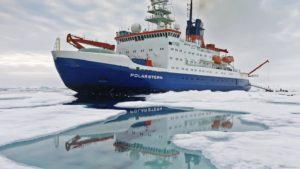 DJØHO/MM has been confirmed as being located on the German icebreaker and Research Vessel R/V Polarstern!
DJØHO/MM has been confirmed as being located on the German icebreaker and Research Vessel R/V Polarstern!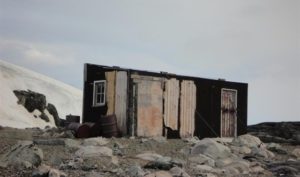 The Hut (67° 32′ South, 67° 12′ West) was built in 1957 and used as a satellite and advance base for survey and geological parties for personnel based at Horseshoe Island Station “Y” (WAP GBR-14). It was also used by parties from Detaille Island Station “W” (WAP GBR-26) and Stonington Island Station “E” (WAP GBR-Ø5). The sea ice around the island had proved unreliable during the previous two seasons, limiting the amount of sled travel and survey work that could be carried out from base.
The Hut (67° 32′ South, 67° 12′ West) was built in 1957 and used as a satellite and advance base for survey and geological parties for personnel based at Horseshoe Island Station “Y” (WAP GBR-14). It was also used by parties from Detaille Island Station “W” (WAP GBR-26) and Stonington Island Station “E” (WAP GBR-Ø5). The sea ice around the island had proved unreliable during the previous two seasons, limiting the amount of sled travel and survey work that could be carried out from base.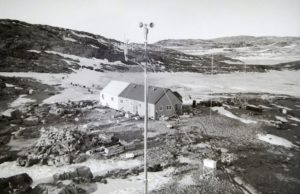 designated as Historic Site No. 63 under the Antarctic Treaty, 19 May 1995 (included with Horseshoe Island Station). The site has been cleaned up and minor repairs completed in Mar 1997.
designated as Historic Site No. 63 under the Antarctic Treaty, 19 May 1995 (included with Horseshoe Island Station). The site has been cleaned up and minor repairs completed in Mar 1997.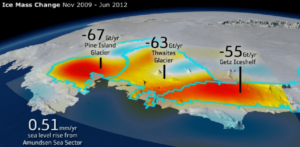 International Thwaites Glacier Collaboration will incorporate other nations’ research to time a potential collapse and assess implications for sea level rise, coastal infrastructure.
International Thwaites Glacier Collaboration will incorporate other nations’ research to time a potential collapse and assess implications for sea level rise, coastal infrastructure. day that teams of scientists at U.S. institutions will deploy to Antarctica to gather the data needed to understand whether the glacier could begin to collapse in the next few decades or centuries from now.
day that teams of scientists at U.S. institutions will deploy to Antarctica to gather the data needed to understand whether the glacier could begin to collapse in the next few decades or centuries from now. search collaboration, called the International Thwaites Glacier Collaboration (ITGC), was announced at the British Antarctic Survey (BAS) headquarters in Cambridge, England. The collaboration’s scientists will begin their first research season in Antarctica in October 2018, establishing a logistical support structure for future work. The collaboration will continue until 2021.
search collaboration, called the International Thwaites Glacier Collaboration (ITGC), was announced at the British Antarctic Survey (BAS) headquarters in Cambridge, England. The collaboration’s scientists will begin their first research season in Antarctica in October 2018, establishing a logistical support structure for future work. The collaboration will continue until 2021. Yuri Sushkin N3QQ (aka UA9OPA) informs that next September 20-23rd 2018, several Radioamateurs will join the “RRC Anniversary meeting” in Orel, Russia, 200 miles from Moscow. A wonderful opportunity to have lot’s of fun and meet all RRC hard core guys!
Yuri Sushkin N3QQ (aka UA9OPA) informs that next September 20-23rd 2018, several Radioamateurs will join the “RRC Anniversary meeting” in Orel, Russia, 200 miles from Moscow. A wonderful opportunity to have lot’s of fun and meet all RRC hard core guys!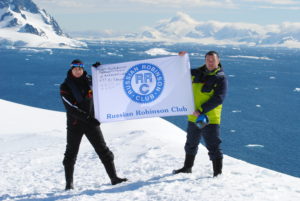
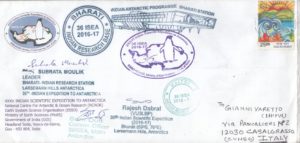 Thanks to Bhagwati VU3BPZ and Rajesh VU3LBP, few envelopes are now coming at the end of the XXXVI Indian Scientific Expedition to Antarctica.
Thanks to Bhagwati VU3BPZ and Rajesh VU3LBP, few envelopes are now coming at the end of the XXXVI Indian Scientific Expedition to Antarctica.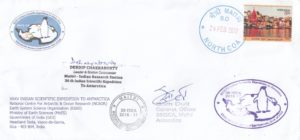 collecting Antarctic stamps, Covers , Antarctic ship covers, Polarogrammes, or any other envelopes or post cards coming from Antarctica is undoubtedly a great satisfaction … same as receiving QSLs after an Ham Radio contact with an Antarctic Base!
collecting Antarctic stamps, Covers , Antarctic ship covers, Polarogrammes, or any other envelopes or post cards coming from Antarctica is undoubtedly a great satisfaction … same as receiving QSLs after an Ham Radio contact with an Antarctic Base! Norbet Trupp VK5MQ, is currently operating from Macquarie Island as VKØAI. He uses an Icom IC-7300 with vertical and has been already reported active on 20, 30, 40 & 80 mts bands in FT8 Mode.
Norbet Trupp VK5MQ, is currently operating from Macquarie Island as VKØAI. He uses an Icom IC-7300 with vertical and has been already reported active on 20, 30, 40 & 80 mts bands in FT8 Mode.
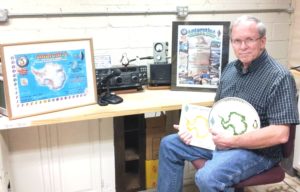 resent worldwide.
resent worldwide.